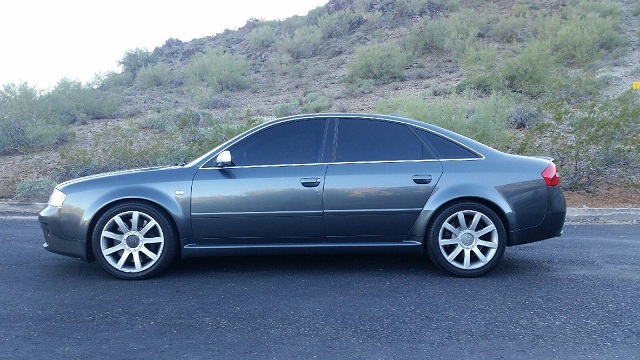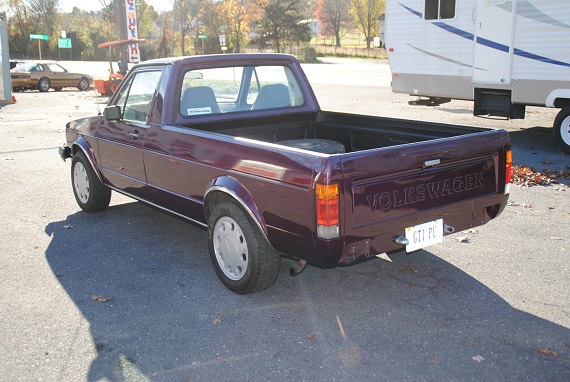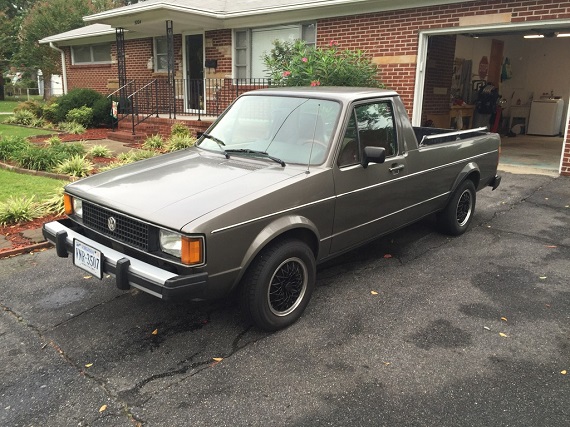Interesting and diverse additions to our Hammertime value guide for this week include some head scratchers, some values and some breathtaking numbers. Leading the charge…
Comments closedTag: Rabbit
Did the high-mileage R32 from earlier get you wondering what you might do with the drivetrain? A little over three years ago, we took a look at a special early Rabbit. Dressed in Miami Blue and looking subtly upgraded with Corrado steel wheels and a lower ride height, what the exterior didn’t give away was that lurking under the hood was a 2.8 liter 24V VR6 motor popped in. The swap looked well executed and generally clean outside of some loose wiring, and the builder hadn’t gone over the top with a crazy interior – instead, relying on the original items for a true sleeper status. With a few minor changes like a better executed intake, engine cover and some odds and ends, the car has reappeared with generally the same introduction – but that’s okay with us, because the look is spot on! It’s also a no reserve auction, so we’ll get to see where an honest yet seriously quick Rabbit gets you these days.
CLICK FOR DETAILS: 1977 Volkswagen Rabbit VR6 24v Swap on eBay
Comments closedVolkswagen of America’s small pickup truck offered a unique experience at the beginning of the 1980s; basically, the front half of the pickup was a Rabbit, which meant relative comfort, reliability, easy of use and driving and good fuel economy. In back, Volkswagen stretched the wheelbase nine inches and swapped in a tubular axle supported by leaf springs giving the pick up 1,100 lbs of payload capacity and a six foot bed – not too shabby! They even launched a “Sportruck” model, which gave you bucket seats and some really trick decals that covered most of the side. You also got some amazing options for the period, like a tachometer (wooooow) and a 5-speed transmission. However, the mix of 1.7 liter, low compression 8V motors available weren’t exactly going ignite your enthusiast dreams. 78 horsepower channeled through the manual would return a not particularly stunning 0-50 time of 9.7 seconds. 60, you’ll remember, was illegal in the United States at that time, so why bother designing a car that could approach it?
But Westmoreland, PA produced some other neat Volkswagens around the same time, though – notably, the U.S. finally got the higher compression, higher output GTi. Though Volkswagen themselves never combined them, that hasn’t stopped some enterprising individuals:
CLICK FOR DETAILS: 1982 Volkswagen Rabbit Pickup on eBay
2 CommentsThe advertising tag line for the 1982 Volkswagen Rabbit Pickup was “So American, it’s not available in Germany”. Since the mid 1980s, though, the opposite has been true as the truck range of Volkswagen was removed from the U.S. lineup. In some ways, that’s a bit strange since the small truck market was so strong in the mid-to-late 1980s, but starting in the 90s and culminating in the early 2000s, the small truck market evaporated as the crossover to large trucks became so easy and prevalent. But big trucks have gotten very expensive, and smaller trucks (which really are the size of 1980s full sized trucks) are experiencing a minor resurgence – so much so that VW is rumored to be thinking of bringing the Amarok starting as early as next year. So, let’s take a look back at where the VW pickup began:
CLICK FOR DETAILS: 1982 Volkswagen Rabbit Pickup on eBay
Comments closedThe product catalog for what Formula E is makes for a pretty hilarious read. “Passive Formula-E systems built in to your VW begin with an aerodynamic body design that cuts down on wind resistance.” Have you actually looked at a Rabbit? I guess in terms of footprint, it was physically smaller than a Chrysler Cordoba, so there’s that? But ‘aerodynamic’ is not the first thing I think of when I see an A1. It continues on touting the benefits of radial tires (Wooooow), a high-torque engine (compared to….?), and the George Costanza-inspired “breakerless transistorized ignition”. What it really was was a long 5th gear, denoted on Audis as the ‘4+E’ in the same year. What that meant was it spun the high-torque motor down to low revs, and that road better be pretty flat and not particularly windy if you’d like to maintain any speed. And, if you downshifted to pass anything or go the speed limit, immediately an arrow-shaped light would pop on the dash, reminding you that fuel was being wasted. But Volkswagen claimed it was good for 42 m.p.g. in a period still reeling from the fuel crises of the 1970s, and marketing is marketing.
What the Rabbit Convertible really offered you was one of the very few drop-top options in the early 1980s. Remember, this was a time when Detroit had pulled out of convertibles following hints they would be banned by the NHTSB. Japan didn’t really have much of anything on offer, either, as it hadn’t really established itself fully into the market in anything other than superb economy cars. And Germany? In 1982, you had two options – the Mercedes-Benz 380SL, or the Rabbit Convertible which had replaced the Beetle in 1980. That was it. In some ways, that makes these early Rabbits special, and though these Volkswagens were no where near as dear as the Daimlers, some who bought them treated them as royalty:







